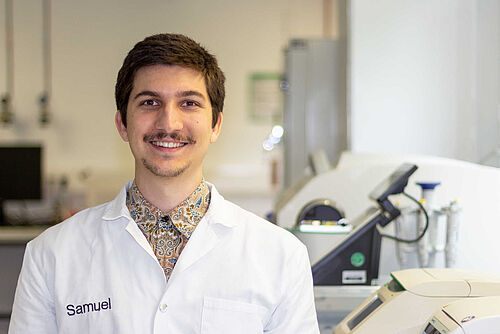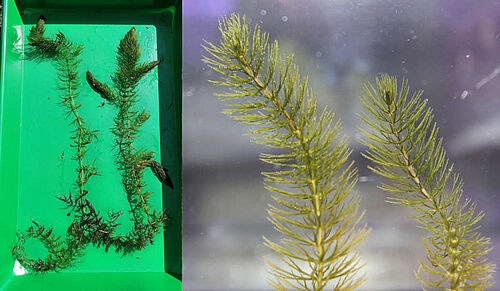
ORCID: 0000-0003-4877-8762
Mastodon: @samnm@mstdn.science
Hereafter some of my current working topics.
There are many different carnivorous plants. Their diversity ist making them special regarding metabolism, morphology and compounds. Hereafter we will have a closer look at the so called bladderworts (Utricularia).
Utricularia
Plants from this genus can live under water, on land or on other plants but always in moist environments. Their special bladder shaped traps suck their prey in. Therefore a negative pressure is generated inside the traps. In the next step the ‘trap door’ opens and closes again. Meanwhile the surrounding water, inclusive the prey, is sucked in. The door movement is one of the fastest movement in the plant kingdom. At the top of the picture is U. gibba and at the bottom U. australis.
My work concentrates mainly on the investigation of Utricularia traps in the context of a possible biotechnological use of these traps. The basic idea of this possible biotechnological use is divided in three parts and illustrated in the accompanying diagram. The main point of investigation are the transport processes in the traps.

C. submersum is an aquatic plant capable of living in eutrophic ponds. Eutrophy means here the presence of many nutrients in such ponds. This is often an environmental problem caused by too much fertilization in agriculture. C. submersum could help to solve this problem. During our research work we already sequenced the C. submersum chloroplast genome. If you want to know more about the problems of eutrophy, I suggest this website (German only):
Hereafter two links and an embedded video with exciting contents (German, with English subtitles).